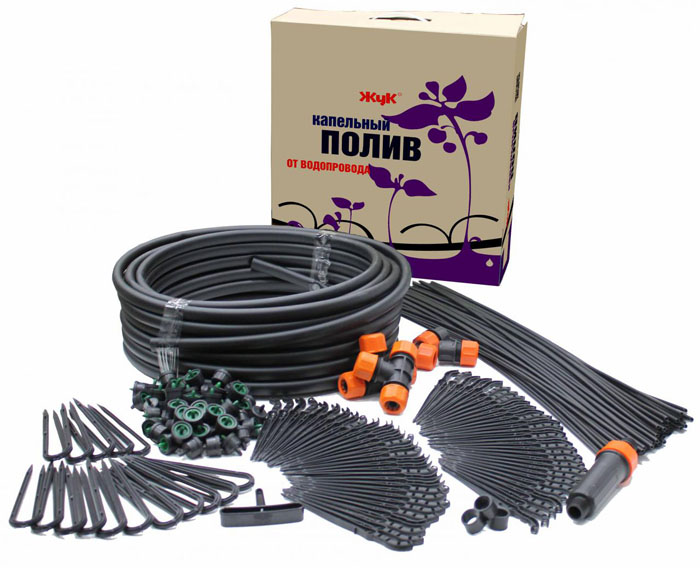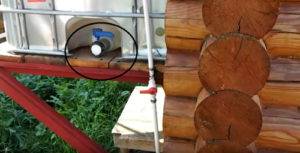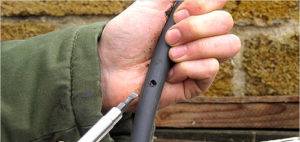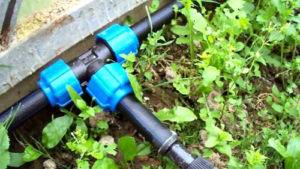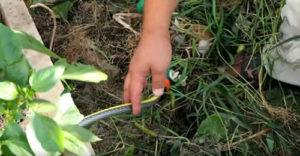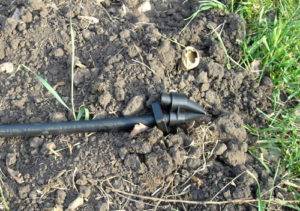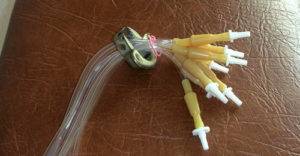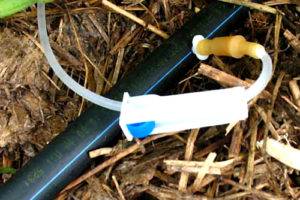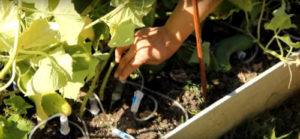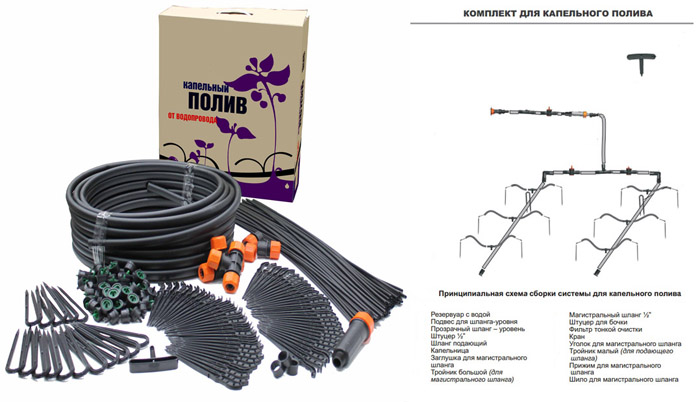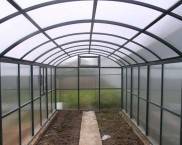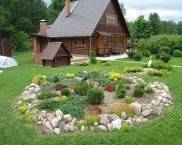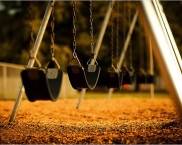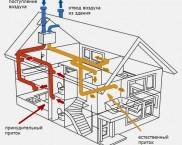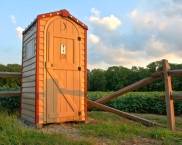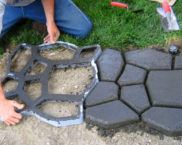Do-it-yourself drip irrigation in the greenhouse: varieties of designs and installation subtleties
Greenhouses allow to ensure timely ripening of crops. This is possible due to the optimal temperature regime, normal lighting and proper watering. In this case, it makes sense to build drip irrigation in the greenhouse with your own hands. Such a device saves time and labor.Adequate watering is essential when growing plants in greenhouses. After all, evaporation in such a space is much more intense than in natural conditions. Let's find out what are the advantages of drip irrigation, as well as how to organize it at home.
The content of the article
- 1 Drip irrigation for the greenhouse: the secrets of homemade designs
- 2 Irrigation types: different systems
- 3 Drip irrigation: the pros and cons of designs
- 4 What is drip irrigation: the main elements of the device
- 5 Types of drip irrigation: prices and purchase features
- 6 Do-it-yourself drip irrigation system for a greenhouse
- 7 Drip irrigation work
- 8 Drip irrigation in the greenhouse: video
Drip irrigation for the greenhouse: the secrets of homemade designs
Let's figure out how to make drip irrigation. In this case, it is advisable to perform automated irrigation. When deciding how to properly water it, you need to take into account that different crops require different amounts of water.
It is important to know how much water is needed, and which plants, because soil oversaturation can lead to the opposite effect and depletion of the soil. This will make the weeds grow faster.
The drip device has the following features:
- for a plant to develop properly, it needs a sufficient amount of air. What ordinary watering does not provide. If the root has no air movement, then the culture will not develop as it should;
- the liquid penetrates directly into the plant root;
- the optimal ratio of air and moisture contributes to the correct development of plants, which makes it possible to do without fertilizers.
Before deciding how to choose a system for such irrigation and how to use such a structure, it is necessary to study the principle of operation of the structure. Fluid can be moved by gravity depending on equipment options. In this case, a gravitational irrigation design is used, that is, water is supplied as soon as the barrel is full. There is also a forced version of the device. It is important to decide which pump needed andwhether a filter is needed. It is important to know what pressure is required for such a system, since many similar structures from the manufacturer are designed for a pressure of no more than 2 atm. In this case, such pressure regulator - reducer. A hose or drip tape is also used. The water at the site moves through pipes with branches. In this case, special fittings for drip irrigation are used. Trunk pipes are laid along the walls of greenhouses or along fences.
Photo shows spot irrigation, including drip lines that extend to all lines beds... Lines like these are made using a plastic pipe or drip tape with holes. At the end of such lines, plugs or flush taps are attached.
You also need to decide if you need a special filter. With the help of a reducer and a valve tap, the water supply is regulated.
How to assemble irrigation structures also depends on the required volume of the irrigation tank. To correctly calculate the capacity, you need to multiply the area of the site by 20 liters. It is this amount that is needed to moisten one square meter.
How much to water depends on which crops you are watering. For example, cucumbers and tomatoes require completely different conditions. High humidity is harmful to tomatoes, since such vegetables are infected with fungal and bacterial diseases. Therefore, dry air is maintained in greenhouses, for which ventilation is often arranged. But for cucumbers, you need to create a high level of soil and air moisture. With a lack of moisture, the leaves can begin to wither quickly.
This is how the drip design works:
- the water flows through the filter. At the same time, it is cleared of debris, large debris and dust;
- since the container is located on a hill, the water penetrates by gravity into the main pipe, and then through the hoses;
- a valve is placed near each plant through which water enters the ground.
Note! For better watering, you need to place the plants at a distance of 30 cm from each other.
Related article:
Do-it-yourself greenhouse from a profile pipe. In a separate review, detailed instructions for the design and construction of a structure from a profile pipe are provided with photo examples.
Irrigation types: different systems
Now let's figure out what are the main types of drip irrigation. Each system has certain disadvantages and advantages. Here are the main options:
- for automatic watering with separate droppers, branches are supplied to each plant. In this case, the irrigation radius should be small, since such unfolding takes a long time.The main elements of such systems are microtubes through which the liquid passes to the root system. For installation in a greenhouse, splitters, special valves and stands for fastening micropipes are used;
- drip tapes they are used not only for plants, vegetable gardens, but also for trees. In this case, the sprinkler pipes are placed in parallel. Such methods of irrigation do not have such a long service life as individual droppers of sprayers. For automatic irrigation of fields, there are holes on each belt through which water flows. One edge is located at the tank, and on the other, plugs are mounted. This ensures that the liquid flows out against the desired roots.
Also, when choosing an irrigation system, you must consider different types of hoses, types of sprinklers and sprinklers.
Drip irrigation: the pros and cons of designs
There are different options for watering plants outdoors, but they are not always suitable for greenhouses.
The drip system has the following advantages:
- increasing the yield of different crops;
- water is distributed in certain dosages, which ensures the economy of this design;
- you can create a fully automated process;
- the threat of soil erosion is reduced;
- resistance to different climatic conditions appears;
- the possibility of uniform distribution of fertilizers is provided;
- the quality of the crops grown is increasing;
- it becomes possible to irrigate large areas at low pressure;
- Ease of controls.
There are other important benefits as well. For example, saving water can ultimately reduce the cost of the final product.Drip design set installed in greenhouse, significantly reduces the consumption of water and fertilizers. The optimal amount of moisture must be observed for some crops, especially tomatoes. You can buy different irrigation dosing devices.
All the advantages and disadvantages of different watering options are presented in the table.
Table 1. Advantages and disadvantages of different irrigation options
| Type of watering | pros | Minuses |
|---|---|---|
| Root | Performed with a simple watering can. In this case, fertilizers can be applied. | The complexity of the procedure, as it takes a lot of time |
| Watering in the beds | Ease of watering, as you just need to lay the hose, and the liquid will spread itself. | Inconvenience when moving between plant trenches. |
| Sprinkling | Uniform process of water supply, as well as the ability to adjust the pressure. | Too complicated installation. The formation of high humidity in the greenhouse, which can provoke the appearance of various diseases. |
| Drip method | The water supply can be regulated. Convenient to use and saves water. In the process, fertilizers are evenly distributed. | The complexity of installation and the high cost of individual elements. |
What is drip irrigation: the main elements of the device
To build a drip structure yourself, you need to buy individual elements.
All parts are sequentially connected to each other:
- disc filter;
- main pipe;
- a mechanism for enriching water with nutrients;
- drip tapes;
- start connectors for connecting drip tapes;
- splitters for drip tapes;
- plugs for tapes.
Drip irrigation tape: application features
Drip tape is a hose through which water moves. In this case, the liquid is purified using different filters. When determining which tape is better, certain characteristics must be taken into account. It is important to calculate the length of the drip tape, as well as the thickness of its walls.Operating conditions depend on these parameters. The distance between the ribbons also matters. In this case, the best tape depends on the maturation of the plants.
You need to know how to mount the tape yourself. A drip tape is installed on the branch pipe, which is tightened with a special nut. To carry out the installation of a similar structure, fittings are used. It is with their help that branching is carried out.To perform strip irrigation, such a structure must be mounted so that the holes in it are located on top.
Watering tape can be different. The main types of drip tape are:
- obsolete technologies include labyrinth tape... A continuous labyrinth is formed along its entire length, along which water moves. This option can be purchased inexpensively;
You can watch a video about this technology:
- crevice tape more reliable than labyrinthine. It also has a labyrinthine channel inside. In this case, it is necessary not only to decide how to lay this element, but also to apply a special filtration system;
- according to the reviews, the production of the emitter type belongs to modern solutions. Irrigation is carried out using flat drippers. Emitter tape creates streams that move water.
To purchase such an element, you need to know how to properly lay it and how much such a tape costs. The drip system depends entirely on the quality of this element. An important indicator is the price. The Tuboflex system deserves special attention, its cost varies between 2500-3000 rubles.
Start drip irrigation connectors: how to use
To make functional drip irrigation, you need to buy a starter connector. Installation for the tuboflex system is as follows. Using a marker, the surface of the main pipeline is marked for the holes. At the same time, connectors and a starting crane are mounted to them. First, seals are placed in the holes, and then the start connectors.
It is worth considering the principle of operation of the device with a crane. Such a connection scheme allows for manual adjustment. This is important if your greenhouse has different crops with different watering needs.
Drippers for irrigation: manufacturing technology
For drip irrigation, you can build a structure with your own hands. You can see how to do this in the video below:
It can be a collapsible and compensated model, as well as an adjustable design with water supply control. The drip irrigation system provides uniform pressure on different sections of the hose. In this case, uniform watering of plants is carried out.
You can use medical drips. Watering indoor plants can be done from a plastic bottle.To make droppers in greenhouses, you first need to install a container and fill it with water.It is also necessary to supply a hose and submersible pump... It is important to calculate how much water you need. For a tomato bush, 1.5 liters a day is enough, and for cucumbers - 2 liters.The dropper can be made in the form of a tape. This option is suitable if irrigation is designed for different crops. For example, for flowers and vegetables.
Before installing the droppers, some calculations need to be done. If external compensated droppers are installed, then in order to determine the water flow rate, the soil is checked to depth in an hour. The price of the structure also depends on this indicator.
Types of drip irrigation: prices and purchase features
The drip irrigation system is a durable and reliable option. The operational periods can exceed 10 years. To equip a tape structure for greenhouses, an irrigation tape is used, which has many holes, as well as wall thickness up to 200 microns. Such a hose is attached with one end to the water supply, and a plug is placed on its other end. When water penetrates, liquid comes out of the holes.
When deciding which system to choose, one must take into account that the irrigation supply cannot be regulated. This option differs from spot irrigation, since it will not work to bring watering to individual points.
The automatic mechanism is most often combined with a hydraulic valve. This uses a controller with a timer, with which you can even set the exact watering time.Knowing how such a system works, you can, according to the same principle, assemble self-watering systems with your own hands.
Let's take a look at the best irrigation systems that have an automatic machine. To determine which is the best option, you need to consider all of them:
- watering with sprinklers... Such a kit allows you to provide an irrigation radius of up to 20 meters. In this case, polypropylene pipes are used. Sometimes polycarbonate structures are used. This irrigation structure increases soil and air moisture;
- for sprinkling are used special drum devices... They are mobile devices. Watering of plants is carried out on an area of 20 square meters;
- for huge areas are used wide grip systems;
- used for several greenhouses microspray... Watering can be done from a barrel. This uses a special flexible hose.
A home-made irrigation device, with the correct calculations, will provide high-quality spot irrigation. In this case, water consumption can be minimal.Where you can buy such structures depends on the features of watering. Our overview of individual models will help you choose the best option.
Table 2. Average cost of drip irrigation
| Models | Picture | Specifications | price, rub. |
|---|---|---|---|
| Gardena hose 01969 - 15m. |  | Suitable for directional irrigation. Can be used even at low pressures. The warranty period is one year. | 1900 |
| "My Fazenda" 100 m |  | The design is designed for 100 meters of beds. Includes drip tape, faucet, plugs and fittings. The system works from a water supply system and from an ordinary barrel. | 1790 |
Drip irrigation for the greenhouse Beetle: characteristics
This system is known for its functionality and efficiency. You can use a greenhouse or greenhouse kit. A similar watering kit can be used for a greenhouse or open area.You can buy a similar design in the company LLC "Cycle", which is engaged in its production.
The installation of a greenhouse option involves the processing of 60 plants. It can be used to process a room with an area of about 18 sq. M. A model from a barrel will cost about 1.8 thousand rubles, and an option for a water supply system - 2.5.The installation of a greenhouse structure can be performed in various ways. You can use the automatic option with a timer.
Drip irrigation AquaDusya: device parameters
The AquaDusya system is designed for 50-60 plants. You can purchase an automatic start or a model without automatic. There is also a semi-automatic mechanism. The advantages of such equipment include the ability to work on batteries, small dimensions of the structure. You can install the machine and other variations yourself. At the same time, the Start structure can water efficiently without the presence of people. There is an option of connecting not only to the water supply, but also from the barrel. The price will depend on this.
Drip irrigation in greenhouses: user reviews
When choosing which watering is best for a greenhouse, it is worth exploring all the options and reviews. The rating of manufacturers will help you choose the best option.
Feedback, system "Zhuk"
Vladimir, Ryazan: “The advantages of the equipment include quality materials and assembly. The set includes a water strider, filter and timer. You can water from a barrel. Of the minuses, I would like to note that the water-measuring tube in the package is bent so that it does not straighten to the end. But overall, the design is great. It works like clockwork. "
Reviewed by Gardena
Alexander, Penza: “I have been using the gardena drip irrigation model for several years. The design is made with high quality. Good irrigation area at normal pressure. Remember to clean the nozzles regularly. You also need to insert a mechanical filter and drain the water in a timely manner. "
Review of AquaDusya
Alina, Krasnodar: “Last year my husband bought the Aquadusya system on the machine. We purchased a set for greenhouses. At first, they wanted to choose a German irrigation design, but the domestic version also copes well with the work and at the same time has a lower cost. Installation of the structure was not difficult. The area of our greenhouse is 40 square meters, and there is a 50 liter tank nearby. The droppers are evenly distributed over the greenhouse area. My husband and I were satisfied with this system. As a result, we got a rich harvest ”.
Do-it-yourself drip irrigation system for a greenhouse
Drip irrigation allows for good treatment of the root system. A similar device for a greenhouse allows you to maximize the beneficial qualities of the soil layer.
Since automatic equipment is quite expensive, it is best to figure out how to make homemade watering.The organization of such a structure is not that difficult. Water passes through the capillary path and enters each root system of plants.
Installation is carried out using brackets, screws, plugs, adjustable wrenches, as well as scissors for cutting pipes.To create quality self-watering, you need to find medical droppers, connectors, nozzles, drip tapes, pipes and switch taps. A modern watering system involves the use of a timer.It is better to choose elements made of plastic, which, unlike metal, do not rust or clog.
If you do not know how to install the structure yourself, then start with a plan placement of beds in a greenhouse or greenhouse. Variants of such layouts can be seen in the photo. The diagram should contain all important parameters. It is necessary to indicate the source of water. When organizing drip irrigation, it is necessary to mark the container to which the pipeline will be connected. In this case, spot irrigation can be performed without your participation.
If micro-irrigation is installed, then a filter system is required. Such a device can be located between the water source and the desired line. The point version is used for tomato seedlings. Since in this case, excessive moisture is very harmful. For tomatoes, an intra-soil irrigation option is also used.
The connection of the hose to the main pipeline can be done using special fittings. The filter is most often installed in the supply pipe.
Installation of drip irrigation
When deciding how to organize watering in the greenhouse, it is necessary to complete the drawing of the system. The scheme is drawn up after carrying out the necessary measurements, taking into account the scale.
How to properly build a drip irrigation system depends on the calculations performed. Here's what to calculate:
- the total length of the drip tape;
- number of start connectors;
- the number of T- and L-shaped splitters;
- number of fittings and plugs.
The organization of the structure after the calculations involves an increase in the number of consumables and drip tape by about 15%. Also, after calculations, a barrel for irrigation is selected.
To determine how to install irrigation elements, you need to note where crops with different water needs will be placed. In this case, the installation should be carried out in separate zones.
Now let's consider the step-by-step installation of the irrigation structure. For manufacturing, you will need a fluid reservoir, main pipe, medical droppers, filters, fittings, plugs and a ball valve. It is better if the water container is at a certain height, for example, 2-2.5 meters. In this case, you need to take care of the stand.
Table 3. Installation of drip irrigation
Main pipe for drip irrigation
In the greenhouse, a main pipeline is made, which supplies water from the source to the start - connectors. Before choosing which pipe is better, you need to calculate the length of all pipes.
It is better to use polyethylene pipes as the main pipe. It is necessary to determine what diameter is needed for such lines. For example, a HDPE pipe should have a diameter of 32 mm. A smaller diameter is not suitable as a 16 mm hole is drilled in the pipes for start connectors. Used for drilling screwdriver... How to make such a structure with your own hands depends on the materials.
You can also use structures made of pvc pipes, polypropylene pipes or reinforced plastic pipes. All such options are in good contact with water, and also do not interact with the chemical components of fertilizers.
When choosing a summer cottage option, the price is an important parameter.Tees are mounted on the branch lines, and a drip hose or tape is connected to their lateral course. Sometimes the hose is oozing.
These elements are attached to the pipe fittings using metal clamps. A crane is installed on each distribution line, with which you can turn off the lines.If you do not want to choose individual elements from plastic pipes, then you can purchase ready-made kits with which summer watering is performed.
Venturi injector
For fertilization, a special fertigation unit is used, also called a Venturi injector. A similar fertilizer device can be bought or made by hand. The principle of operation of such a mechanism is to mix water with fertilizers.Installation of such a structure is necessary for the gradual supply of fertilizers into the main pipe. Such a feeding unit consists of a hose, filter and injector.
To decide how to choose such a device, you need to find out its characteristics. To install a drip irrigation structure, a preliminary calculation is required. This takes into account the device diagram.
The features of installing such a design can be seen in the video below:
To make a homemade mechanism, you need to comply with the following conditions:
- direction of fluid movement. The purchased version of the injector has an arrow indicating the correct direction;
- movable flow through the injector;
- inlet pressure indicator, as well as the difference between outlet and inlet.
Most often, such injectors are made with bypass... They are made of plastic that is resistant to various chemical fertilizers. A special adjustment allows you to reduce the water consumption at the inlet, as well as turn off part of the irrigation system. There are different options for such designs, for example, 1 "or 2".
Drip irrigation filter
Different types of filters are mounted on the pipe after the feeding unit and before the start connectors. How to install and how to connect such a structure with your own hands can be seen in the video:
Installation is carried out taking into account the direction of water flow. It is important for the system how the filter element will be installed.To install filters in the main pipe, special couplings with adapters are used.
When deciding which filter to choose, you need to understand their purpose. They are designed to protect against breakage and clogging of some elements. If there is no filtration system, the garden hose, dispenser or pump will clog up faster. In order not to waste time thinking about how to clean such parts, it is better to take care of the filters.
Before purchasing a specific option, it is worth considering them in the photo, as well as reading reviews about their work. An important parameter is the price. There are filters, coarse, deep and fine cleaning. Deep cleaning devices include a disc or mesh filter.
The cartridge depends on the filtration option. It is the main filter element. It is he who determines the design option: sandy, gravel or cyclonic.There are stations that combine deep and coarse cleaning. You can make a homemade version.
Automatic watering in the greenhouse
You can install a stand-alone drip watering option for your garden beds. The automated system is able to function without your participation. To create auto irrigation, you need to purchase a water container, for example, for watering from a barrel, a timer, a controller, a hose and a pressure regulator. Automation can be purchased.
Full automation assumes uninterrupted water supply.The water tank is located at a distance of 0.5 m from ground level. A pipeline is connected to it, passing to the fertigation unit. An important part of automatic irrigation is a dedicated controller.
Drip irrigation materials
To decide how to make a do-it-yourself drip irrigation system, you need to choose the right materials. To organize watering in a greenhouse, you will need the following materials and tools:
- HDPE pipes with a diameter of 40 mm;
- pipe plugs and greenhouse valve;
- filtration equipment;
- container, water tank;
- nozzles and other control valves;
- stop valves sets;
- irrigation tapes;
- that's what you need from the tools - drills, drill, rubber seals, awl, silicone sealant.
The design of drip irrigation can not only be bought, but also constructed from scrap materials. Here are some design options:
- drip irrigation with medical droppers. You will also need hoses and adapters with connections. How to equip such structures depends on the water consumption. If there is a water supply system on the territory, then the canals are connected to it, and if net, then water is supplied from the barrel by gravity;
- a high-quality irrigation system can be made from plastic bottles... Holes are made in the walls of the container. Water flows to the root system through bottles;
- spot watering of plants is often used. This option may include an injector.
It is better to place such structures under the covering material. Drip irrigation can have a pump or be without a pump.
Related article:
DIY polycarbonate greenhouse. Drawings, types of structures, step-by-step construction and much more in a separate publication of our portal.
Drip irrigation work
After installation of all elements, the system is started up. In this case, drip tapes should not have plugs at the ends. Switching on the system must be accompanied by a free flow of water. At this time, the device of all cranes and automation in the greenhouse are checked.
The installation of the structure involves the marking of the irrigation scheme, according to which the project of individual sections is carried out.
The test run allows you to consider indicators such as operating mode, operating principle and operating time. Drip irrigation optimizes the growth of various crops. The most important task is the planning of all construction operations.
If the operating mode is set incorrectly, the system may fail, which will cause additional costs. With an automated irrigation system, the presence of a person is not at all necessary. It is only necessary to clean the parts from clogging from time to time.With this method of watering, the liquid flows directly to the roots, and the evaporation of the liquid is not so intense.
Water, when passing through the drip irrigation lines, has time to heat up well, which allows you to connect the system not only to the water supply, but also to a well or to a well. The length of the lines is important, as well as the operating pressure in the system.
The outlet temperature should not exceed 18 degrees. If the water is not too warm, then a buffer tank is used.The advantage of drip irrigation is to soak the soil layer, which allows the root system to breathe.
Drip irrigation in the greenhouse: video
Do-it-yourself installation of the system in a greenhouse can be easier if you use a frame structure to breed the main pipes. The device can be held under a roof in a greenhouse.
How this system works is demonstrated by a video tutorial:
Editing can be done with a timer. This will provide automatic mode. You can make wonderful irrigation structures from a barrel. At the same time, drip irrigation for tomatoes and for other crops may differ.
When laying, it is important to focus on the paths for the passageways and at the same time place the highways along them. Under the roof, pipes are joined using press fittings. Branches from the main pipe are lowered using belts and small pipes.
If in the greenhouse it is supposed to grow vegetable crops all year round, then tall and large varieties are chosen. In this case, droppers are used, not tapes.
Droppers are effective for watering climbing cucumbers and tree-like tomatoes.For growing plants in the form of bushes, ribbons are great, They allow you to evenly moisturize the soil.
The correct choice of irrigation system influences the quality of development and growth of different plants. When choosing the right option, you need to take into account many factors. It is important to decide on a design, which can be either purchased or homemade. In any case, it is worth considering the appropriate material and the necessary elements for collecting it.


































